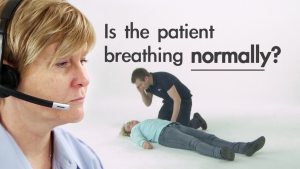
 CHICAGO, IL--Implementing American Heart Association pre-arrival telephone CPR guidelines throughout Arizona has dramatically increased the number of bystanders performing CPR and survival from cardiac arrest, according to research presented at the American Heart Association’s Scientific Sessions 2014.
CHICAGO, IL--Implementing American Heart Association pre-arrival telephone CPR guidelines throughout Arizona has dramatically increased the number of bystanders performing CPR and survival from cardiac arrest, according to research presented at the American Heart Association’s Scientific Sessions 2014.Researchers analyzed and linked over 4,000 9-1-1 audio recordings in eight dispatch centers in Arizona during a three-year period with EMS and hospital outcome data. The AHA Telephone-CPR recommendations were implemented using a bundled approach of guideline-based protocols, interactive training materials, data collection and a continuous quality improvement program.
They found:
- A 41 percent relative increase in the rate of Telephone-CPR from 44 percent to 62 percent.

- The time from call receipt to starting the first chest compression with Telephone-CPR decreased from 178 to 155 seconds.
- A relative increase in survival of 42 percent from 7.9 percent to 11.2 percent.
Seventy percent of Americans feel helpless to act during a cardiac emergency because they don’t know how to administer CPR or their training has significantly lapsed, according to American Heart Association CPR statistics.
See slides here.
Bentley J. Bobrow, M.D., Arizona Department of Health Services, Phoenix, Arizona; Arizona Emergency Medicine Research Center, Phoenix, Arizona
SOURCE: American Heart Association
See HealthDay Report here.
